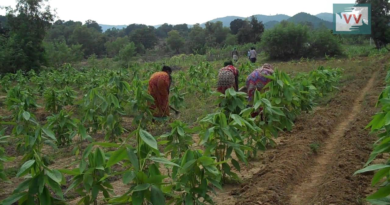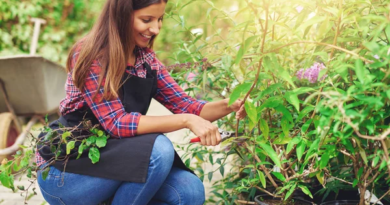Jute and Mesta Cultivator near me (6 month course)
Jute and Mesta Cultivator click here

One has to ensure good agricultural practices and sustainable harvesting principles in order to meet the quality standards of jute and mesa fibers. Brief description of the job: Farmer should is able to prepare the land, identify and cultivate jute and Mesta seeds by irrigating and cultivating using appropriate tools and quality jute and Mesta yarn techniques and doing basic business activities.
Your Qualities: Need to get acquainted with a variety of financial plants, which are communicative and have an attitude. You can work long hours, and you have a keen eye for detail. There must be responsibility for the outcome of the individual and the work Jute and Mesta Cultivator.
Prepare land, identify seeds and sow jute and Mesta crops Jute and Mesta Cultivator:

How to work Prepare land for jute and master land The user / person at work should be able to:
PC1. select suitable soil and soil for jute and mesa cultivation Soil and suitable soil: Land full of plains or small slopes or low soils with fertile, fertile or well-drained soil or river basins
PC2. ensure high environmental conditions for planting jute and Mesta crops Extreme conditions: Temperature 20 ° C-35 ° C, humidity 40-90%, rainfall – 100 to 150 cm, etc.
PC3. treat acidic or basic soils to maintain soil neutrality for better yields Treatment: Lime treatment, basic Sulfur treatment, etc.
PC4. prepare a good tilth, well-ventilated and efficient seed bed using the techniques and tools / equipment described Strategies: Plow, fall plow, order, ladder, etc. Tools / Equipment: Land plow or
PC5 tractor. use a basic amount of compost to improve soil material Manures: Nitrogen, phosphorus and potassic fertilizer
PC6. prepare clean seedless beds for a better crop yield Identify the seeds and sow the jute and Mesta plants The user / person at work should be able to:
PC7. select different varieties of different species of jute and Mesta plant depending on needs and climates Types of species: Jute – Crochu’s olitorious (Toss) and Crochu’s capsularis (White), Mesta – Hibiscus cannabin’s (Kenaf) and Hibiscus sabdariffa (Roselle)
PC8. identify and collect quality sowing seeds from accredited organizations, e.g., National Seeds Corporation, Jute Corporation of India, etc.
PC9. select type of sowing to plant jute and Mesta Planting Types: Line and broadcast
PC10. specify sowing time as
PC11 crop variety. make sowing seeds by hand or machine as needed Jute and Mesta Cultivator.
Organizational Context (Knowledge of the company / organization and its processes) Jute and Mesta Cultivator:
The user / person at work needs to know and understand:
KA1. appropriate occupational health and safety requirements, job responsibilities and
KA2 obligations. you can approach him for support for information related to the work , Jute and Mesta Cultivator specification and sponsorship of
KA3. the importance of compliance with health standards, hygiene, safety and quality and the impact of non-compliance by consumers and business
KA4. the right people and their responsibilities in the
KA5 farming area. documents and related procedures applicable to the context of the work Jute and Mesta Cultivator
B. Technical Knowledge Jute and Mesta Cultivator:
The user / person at work needs to know and understand:
KB1. suitable soil and soil for cultivating jute and Mesta crops
KB2. the natural boundaries of jute and Mesta farming
KB3. tools and techniques for preparing a seed bed
KB4. species of jute and Mesta plants
KB5. quality and availability of jute and Mesta seeds
KB6. different types of planting methods for jute and Mesta farming
KB7. different seed distribution processes for better quality and quantity Jute and Mesta Cultivator.


Core Skills/ Generic Skills of Jute and Mesta Cultivator:
The user / person at work needs to know and understand how to do this:
SA1. write down work schedules in logs, registers, etc. in English or local language
SA2. fill in details of expenditure incurred, building materials, tools, etc. English or Home Language Learning Skills The user / person at work needs to know and understand how to do this:
SA3. read and understand handbooks of materials and tools / tools, etc. Oral communication (listening and speaking skills) The user / person at work needs to know and understand how to do this:
SA4. maintain an active
SA5 relationship. networking: Fellow farmers and related organizations
SA6. seek timely advice from others / adults: Fellow farmers, affiliated organizations, and subject matter experts.
Making Professional Skills Decisions The user / person at work needs to know and understand:
SB1. make decisions about soil selection, soil, and crop types, seed and seed quality, methods for preparing tool beds and tools, different sowing processes, etc. Edit and edit The user / person at work needs to know and understand:
SB2. plan and plan planting and sowing activities ahead of time Customer space The user / person at work needs to know and understand how to do this:
SB3. use customer demand as a key component of production targeting Problem Solving The user / employee needs to know and understand:
SB4. manage relationships with co-farmers who may be stressed, frustrated, confused or angry with
SB5. think about the problem, explore possible solutions and find the best / best solutions for analytical thinking The user / employee needs to know and understand:
SB6. analyze sowing techniques and planting procedures ahead. explore information collected from observation, experience, understanding / thinking or communication, as a guide to thought and practice Jute and Mesta Cultivator Jute .
Carry out irrigation and inter-cultural activities of jute and Mesta cultivation farms Jute and Mesta Cultivator:
User / employee should be able to:
PC1. irrigate the field on a regular basis using
PC2 flood irrigation. ensure that there is enough water to drain most of the water from the farm. Perform jute and Mesta farms. do weed control on the farm using hand weed control tools or spraying specific herbicides per tool Tools: Nail nail, hand plow, harrow weedier, wheelbarrow, etc.
PC4. identify insects for jute and Mesta crops Insects: Hairy caterpillar, stem weevil, semi-lopper, mite, field cricket, etc.
PC5. treat jute and Mesta plants with pesticides when penetration exceeds the
PC6 economic level. find jute and mesa plants per need
PC7. confirm the cultural transformation of
PC8 disease management. use different fertilizers for nutrient management depending on soil fertility Fertilizer: Neem cake, urea, ammonium sulfate, magnesium sulphate, potassium oxide, cobalt, copper, boron, manganese, i -molybdenum
Organizational Context (Knowledge of the company / organization and its processes):
The user / person at work needs to know and understand:
KA1. appropriate occupational health and safety requirements, job responsibilities and
KA2 obligations. you can approach him for support for information related to the work, specification and sponsorship of
KA3. the importance of compliance with health, hygiene, safety and quality standards and the impact of non-compliance on consumer and business
KA4. the right people and their responsibilities in the
KA5 farming area. documents and related procedures applicable to the context of the work
Technical Knowledge of Jute and Mesta Cultivator:

The user / person at work needs to know and understand:
KB1. water management equipment and jute farming methods and Mesta
KB2. the importance of irrigating the jute / Mesta field in a common space using specific
KB3 tools and techniques. weed species and its control systems, tools and treatment
KB4. causes and solution of different types of pesticides jute and Mesta
KB5. various plant diseases and tool management tools: Crop rotation, deep farming, clean farming, healthy seed use, seed treatment, row planting, very large space, timely weed, use of soil ameliorants, etc.
KB6. nutritious food for sustainable agricultural production
KB7. incorporation of various types of quality and productive fiber fertilizer,
KB8. conservation of soil production and soil health, as well as environmental protection Jute .

Core Skills/ Generic Skills
The user / person at work needs to know and understand how to do this:
SA1. write down work schedules in logs, registers, etc. in English or local language
SA2. fill in details of expenditure incurred, building materials, tools, etc. English or Home Language Learning Skills The user / person at work needs to know and understand how to do this:
SA3. read and understand instruction manuals, tools / tools, etc. Oral communication (listening and speaking skills) The user / person at work needs to know and understand how to do this:
SA4. maintain an active
SA5 relationship. liaison: Fellow farmers and related organizations
SA6. seek timely advice from others / adults: Fellow farmers, affiliated organizations, and topic experts
Making a Decision A user / person at work needs to know and understand Jute and Mesta Cultivator how to do it:
SB1. make timings and methods of irrigation, weed control activities, pest and disease control and management, type of fertilizer and its use, tools, etc. Plan and Edit The user / person at work needs to know and understand:
SB2. plan and organize irrigation strategies and various cultural activities Client customers / operator need to know and understand:
SB3. use customer demand as a key component of production targeting Problem Solving The user / employee needs to know and understand:
SB4. manage relationships with co-farmers who may be stressed, frustrated, confused or angry with
SB5. think about the problem, explore possible solutions and find the biggest / best solutions for analytical thinking The user / person at work needs to know and understand:
SB6. analyze the tools and techniques of different irrigation and cultural practices. explore information collected from observation, experience, understanding / thinking or communication, as a guide to thought and practice

Carry out irrigation and inter-cultural activities of jute and Mesta cultivation farms Jute and Mesta Cultivator:
User / employee should be able to:
PC1. identify the right time to harvest jute and Mesta crops to get the best yield and quality
PC2 fiber. select mature jute and Mesta plants to be harvested according to plant age Age: Jute-110-120 days and Mesta-120-130 days
PC3. cut selected plants by cutting the base or breaking them to harvest using set tools, e.g. scissors, etc.
PC4. ensure the shedding Jute and Mesta Cultivator of the harvested leaves of the harvested method with a specified reduction of fat Method: Remove the leaves for 2-4 days in the
PC5 field. sort and assemble the plant / fibers in size and size, for
PC6 escape. perform fiber reduction using decorticators or ribbons Perform post-harvest activities for jute and Mesta plants The user / person at work should be able to:
PC7. ret jute and Mesta plants for extraction of fiber by removing polymers used using a variety of methods Methods: General, enzymatic / biological and chemical Organic polymers: Pectin and lignin
PC8. ensure the availability of suitable conditions for recycling Conditions: Pure water moving slowly, 20: 1 to return water to the plant scale, temperature – 34 ° C, pH – 6.5-7, fertilizer volume, etc.
PC9. select and collect microorganisms from authorized organizations to obtain the highest yields Organizations: Research institutes and government agencies PC10.trip fibers from reclaimed plants using a variety of extraction methods Methods: Removing a single stick or hitting a break jerk
PC11. wash the extracted fibers for some time in the water to remove
PC12 debris. which dries the washed fibers under the sun with bamboo bamboo for proper pressure Jute and Mesta Cultivator.
Organizational Context (Knowledge of the company / organization and its processes):
The user / person at work needs to know and understand:
KA1. appropriate occupational health and safety requirements, job responsibilities and
KA2 obligations. you can approach him for support for information related to the work, specification and sponsorship of
KA3. the importance of compliance with health, hygiene, safety and quality standards and the impact of non-compliance on consumer and business
KA4. the right people and their responsibilities in the
KA5 farming area. documents and related procedures applicable to the context of the work
B. Technical Knowledge:
The user / person at work needs to know and understand:
KB1. the course of development from Jute and Mesta Cultivator the seedling stage to the growth stage
KB2. different stages of growth
KB3. harvesting method and tools
KB4. name reduction method
KB5. fiber extraction activities for jute and Mesta plants using specific techniques Strategies: Recovery, removal, washing and suspension
KB6. various regenerative methods – chemical, generic and enzymatic or Biological Biological: Different types of bacteria such as
KB7 requirements. types of stripping methods – removing one stick or hitting a break jerk
KB8. methods for cleaning and drying jute and Mesta
KB9 plants. jute quality parameters and Mesta fibers
KB10. a system for measuring jute and mesa plants Jute and Mesta Cultivator.
Core Skills/ Generic Skills Jute and Mesta Cultivator:

The user / person at work needs to know and understand how to do this:
SA1. write down work schedules in logs, Jute and Mesta Cultivator registers, etc. in English or local language
SA2. fill in details of expenditure incurred, building materials, tools, etc. English or Home Language Learning Skills The user / person at work needs to know and understand how to do this:
SA3. read and understand handbooks of materials and tools / tools, etc. Oral communication (listening and speaking skills) The user / person at work needs to know and understand how to do this:
SA4. maintain an active
SA5 relationship. liaison: Fellow farmers and related organizations
SA6. seek timely advice from others / adults: Fellow farmers, affiliated organizations, and subject matter experts.
Making Professional Skills Decisions The user / person at work needs to know and understand:
SB1. make decisions on harvesting and post-harvest methods and tools for jute and mesta plants Plan and edit The user / person at work needs to know and understand that:
SB2. plan and organize harvesting and harvesting operations after jute and mesta Centricity of Customers The user / person at work needs to know and understand:
SB3. use customer demand as a key component of production targeting Problem Solving The user / employee needs to know and understand:
SB4. manage relationships with co-farmers who may be stressed, frustrated, confused or angry with
SB5. think about the problem, explore possible solutions (solutions) and find the best solutions
Maintain health & safety at the workplace of Jute and Mesta Cultivator:
In order to be competent, the user / person at work must be able to:
PC1. inspect basic safety prior to the operation of all equipment and vehicles and accidents reported to the appropriate
PC2 manager. work in which protective clothing or equipment is required and appropriate protective clothing or equipment is used to perform these functions
under the
PC3 job policy. read and understand the dangers of use and pollution mentioned on the labels of pesticides / explosives etc.
PC4. check the risk before performing manual manipulation operations, and then work according to the current secure
PC5 operating system. use equipment and building materials and restore the same to designated storage where
PC6 can be used. dump garbage at
PC7 selected location. detect hazards in viewers and take steps to reduce the risks associated with activities in the
PC8 workplace. do your job in a way that Jute and Mesta Cultivator minimizes environmental damage all the procedures and work instructions for risk management are followed by
PC9. report any accidents, incidents or problems without delay to the appropriate person and take immediate steps to minimize further risks Provide appropriate emergency procedures To be competent, a user / employee must be able to:
PC10. follow procedures for dealing with accidents, fires and emergencies, including location and indications for emergency
PC11. follow emergency procedures in the normal / corporate environment
PC12. use emergency equipment according to manufacturer specifications and
PC13 workplace requirements. provide appropriate treatment for the patient’s injury in accordance with
PC14 first aid strategies. find (if possible), clean, test / test, refresh, replace and store first aid kits as appropriate
PC15. report details of first aid provided in the workplace Jute and Mesta Cultivator.
Organizational Context (Knowledge of the company / organization and its processes) Jute and Mesta Cultivator:
The user / person at work needs to know and understand:
KA1. hygiene and fitness requirements
KA2. your normal activities under the relevant health and safety law
KA3. what protective equipment and clothing should be worn and how to care for
KA4. an effective and safe way to use the materials and equipment needed in your
KA5 work. the importance of proper housing maintenance in the work of
KA6. KA7 safe waste disposal methods. ways to reduce environmental damage during work
B. Technical Knowledge:

The user / person at work needs to know and understand:
KB1. health and safety hazards and steps to be taken to manage those risks in your workplace
KB2. Workplace procedures and requirements for the treatment of occupational injury / illness
3. basic emergency first aid program
KB4. local paramedics
KB5. why accidents, incidents and problems should be reported and steps to be taken Jute and Mesta Cultivator.
Guidelines for Assessment of Jute and Mesta Cultivator:
- Criteria for assessment for each Qualification Pack will be created by the Sector Skill Council. Each Performance Criteria
(PC) will be assigned marks proportional to its importance in NOS. SSC will also lay down proportion of marks for Theory and
Skills Practical for each PC. - The assessment for the theory part will be based on knowledge bank of questions created by the SSC.
- Individual assessment agencies will create unique question papers for theory part for each candidate at each
examination/training center (as per assessment criteria below). - Individual assessment agencies will create unique evaluations for skill practical for every student at each
examination/training center based on this criteria. - To pass the Qualification Pack, every trainee should get 70% in aggregate Jute and Mesta Cultivator.
- In case of successfully passing only certain number of NOS’s, the trainee is eligible to take subsequent assessment on the
balance NOS’s to pass the Qualification Pack.







